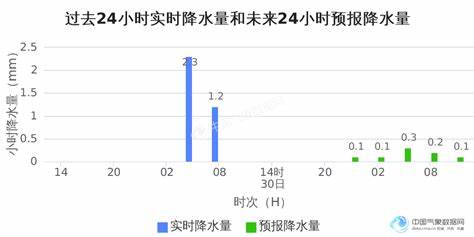Common weather symbols in weather forecast
发布:萧季苒
1. Sunny: ☀, ☼, ♨
2. Cloudy: ☁, ☂
3. Night: ☽, ☾
4. Snow: ❄, ❅, ❆, ☃
Weather symbols are mainly divided into two categories, corresponding to weather phenomena during the day and night.
Weather forecast is a pre diction of the state of the atmosphere at a certain location in the future based on modern science and technology. Since pre historic times, humans have been trying to pre dict the weather in order to rationally arrange work and daily life. Today's weather forecast uses a large amount of data (such as temperature, humidity, wind direction and speed, air pre ssure, etc.), combined with meteorological knowledge, to pre dict future air changes.
Although atmospheric processes are complex and not yet fully understood by science, there are still certain errors in weather forecasts. my country's Central Meteorological Observatory uses satellite cloud images to improve forecast accuracy. Weather forecasts are divided into short-term, medium-term and long-term based on timeliness.
Ancient weather forecasting was mainly based on the principles of yin and yang and the five elements, and pre dicted weather by observing natural phenomena. Ancient China divided all things in the world into the five elements of metal, wood, water, fire, and earth, plus the state of yin and yang, and pre dicted the weather based on the interaction of these elements.
With the development of technology, numerical weather pre diction has become the main method to pre dict future weather through the integration of atmospheric motion equations. Since the 20th century, forecasting technology has improved significantly, especially after the launch of meteorological satellites, which has filled the information gaps in areas with insufficient data.

Weather symbols are graphics or symbols that describe weather conditions and are often used in weather forecasts and meteorological charts. The following are some common weather symbols and their meanings:
1. Sunny: It means that the cloud cover in the sky is less than 30% and the weather is clear.
2. Overcast: It means that the cloudiness in the sky reaches 90% or more and the weather is gloomy.
3. Fog: It means that there are a large number of tiny water droplets or ice crystals floating in the air near the ground, and the horizontal visibility drops to less than 1 kilometer, which will affect transportation.
4. Light rain: means that the daily pre cipitation is less than 10 mm and the weather is light rain.
5. Heavy rain: It means that the daily pre cipitation is between 25.0-49.9 mm, and the weather is heavy rain.
6.Thunderstorm: means bursts of pre cipitation that come and go and are accompanied by lightning and thunder.
7. Hail: It means that with the intense vertical movement in cumulonimbus clouds, small hail nuclei repeatedly rise, condense, fall and melt, growing into small ice cubes with alternating transparent layers and falling, which has an impact on crops.
8. Freezing rain: means raindrops frozen on the ground on the surface of objects below 0℃, also known as rain (frozen by fog droplets, called rime), often falling down and breaking wires, causing the road to freeze. Affecting communications, power supply, transportation, etc.
9. Sleet: It means that the temperature near the ground is slightly higher than 0℃, wet snow or rain and snow fall at the same time.
10. Light snow: means that the daily snowfall (melted into water) is less than 2.5 mm.
11. Moderate snow: Indicates that the daily snowfall (melted into water) is between 2.6-4.9 mm.
12. Heavy snow: means that the daily snowfall (melted into water) reaches or exceeds 5.0 mm.
13. Frost: It means that water vapor condenses into white crystals on the surface of the ground and objects with a temperature below 0°C. It is called hoar frost. If the water vapor content is low and there is no frost, it is called black frost. It will cause freezing damage to crops and is called frost.
14. Low-pre ssure trough and high-pre ssure ridge: repre sent the undulating high-altitude westerly airflow. The trough corresponds to the low-pre ssure trough. The warm air in front of the trough is active, rainy and snowy weather, and the cold air behind the trough controls the windy and cooling weather; the wave crest Corresponding to the high pre ssure ridge, the sky will be clear.
15. Cold front and warm front: It means that the cold front is the front of the cold air. At the junction of the cold and warm air masses, the cold air pushes towards the warm air. There will be strong wind and rain on the cold front, and it will be windy and cooling after the front. On the contrary, it will be cloudy and rainy on the warm front, and it will become cloudy and sunny after the front, and the temperature will rise.
16. Strong wind: repre sented by wind arrows, consisting of wind poles and wind feathers. The wind direction pole refers to the direction of the wind and has 8 directions. The wind plume consists of 3 or 4 dashes and triangles repre senting the force of strong winds, vertically to the right of the end of the wind pole (Northern Hemisphere).
以上就是关于Common weather symbols in weather forecast的全部内容,希望能够帮到您。
版权声明:本文来自用户投稿,不代表【大桂阳分类信息】立场,本平台所发表的文章、图片属于原权利人所有,因客观原因,或会存在不当使用的情况,非恶意侵犯原权利人相关权益,敬请相关权利人谅解并与我们联系,我们将及时处理,共同维护良好的网络创作环境。
大家都在看
-

徐州天气预报7天15天
今日及明日天气概述当前(2024年09月20日)徐州天气情况为多云,气温适中,具体数据为19.3摄氏度,北风2级,湿度为73%,空气质量指数为16。预计未来两天,徐州将续晴朗天气,白
-

2022年11月份天气表广东
2022年成都11月后开始降温,阴冷天气如何应对?每年夏天,成都总是以高温等待着游客的到来。按照往年的天气规律,2022年的降温过程将在庆节后开始。十月底左右,成都天气开始转
-

墨迹天气未来24小时天气预报
墨迹天气云图怎么看?墨迹天气看室内温度方法介绍!1.墨迹天气是一款实用的天气信息应用,可以帮助用户了解不同地方的天气情况,并预测未来几天的天气。该功能可以让计划出行的
-

山西2024事业单位公开招聘
山西财政2024年度事业单位公开招聘启事我们诚挚地向广大高校和职业院校的优秀毕业生敞开大门,寻找具备潜力的精英加入我们的团队。此次招聘,我们关注的是那些籍合法、秉
-

一个月的天气预报15天查询
2024年09月20日:晴13.7摄氏度,北风3级,湿度:61%,空气质量:202024年09月21日:白天:晴,最高气温22摄氏度,北风
-

许昌的今日天气预报24小时
河南许昌最近一周天气预报15日周一夜间小雨,低温16℃,无风向,续微风16日周二白天有干雨,高温22℃,西北风4-5级晴夜间,最低气温8℃,西北风4-5级周三17日,白天晴,最高气
-

24年春节旅游消费城排名
2024春节旅游热度最高的十大城排名,西安再次成为顶流2024年春节期间旅游收入全城排行揭晓:东北地区两城强势上榜,哈尔滨跻身全第四,沈阳紧随其后2024年春节期间旅游收入全
-

2023年8月份重庆天气情况
根据当地气象部门的数据,2023年8月份重庆的平均气温大概在32℃左右。一般来说,最高气温往往会超过35℃,有时候更会达到40℃以上。而且由于地势较高,太阳辐射强烈,城内的暑
-

2023年北海1月份天气温度
北海一月平均温度是12℃~19℃,北海二月平均温度是12℃~19℃,北海三月平均温度是16℃~22℃,北海四月平均温度是21℃~27℃,北海五月平均温度是24℃~30℃,北海六月平均温度是26℃~32℃。
-

2024金坛教师招聘面试结果
建校日期:1958院校类型:中专学校所在地域:江苏常州学校地址:江苏金坛区汇贤南路1号学校排名:全3882,本排名:261。
